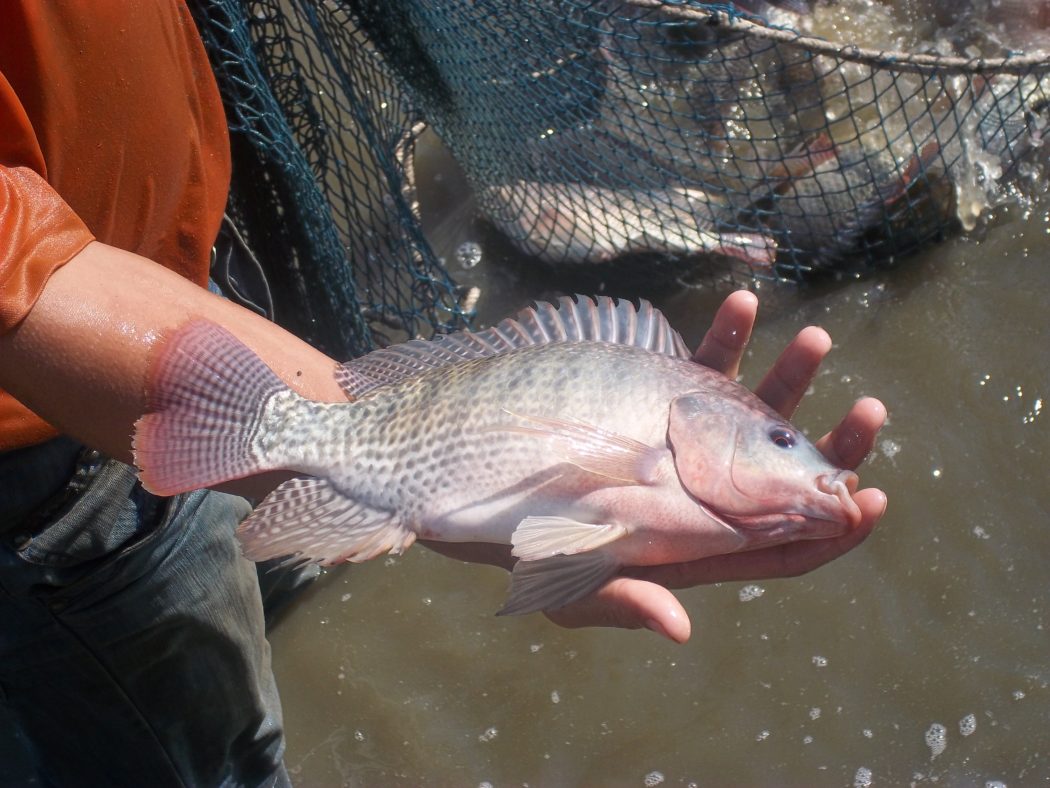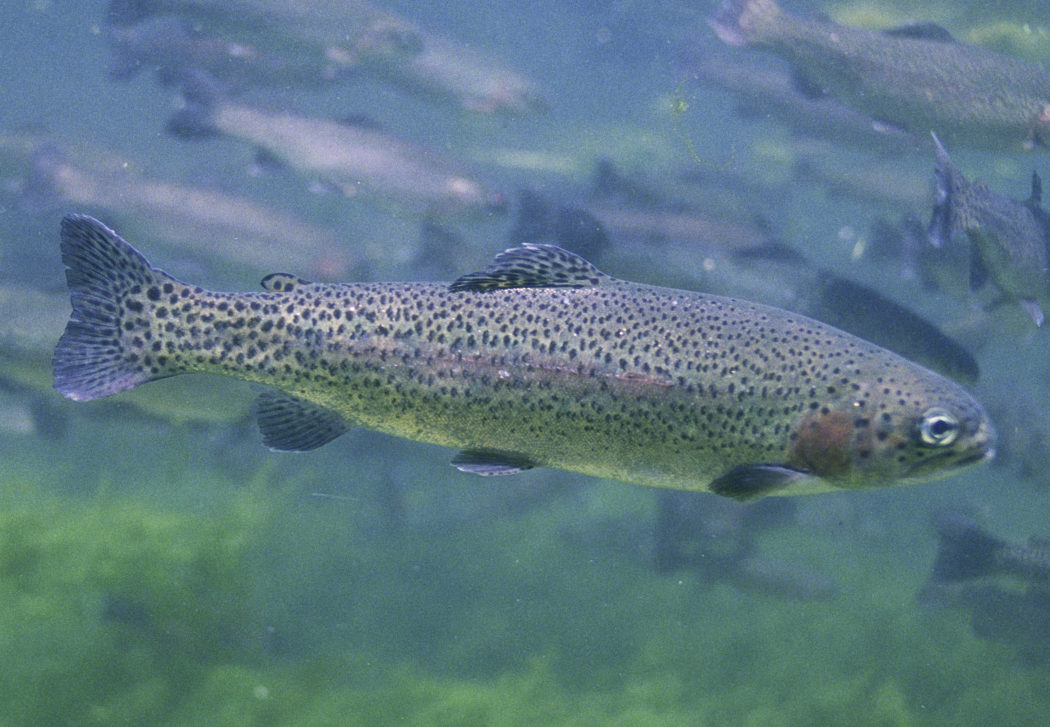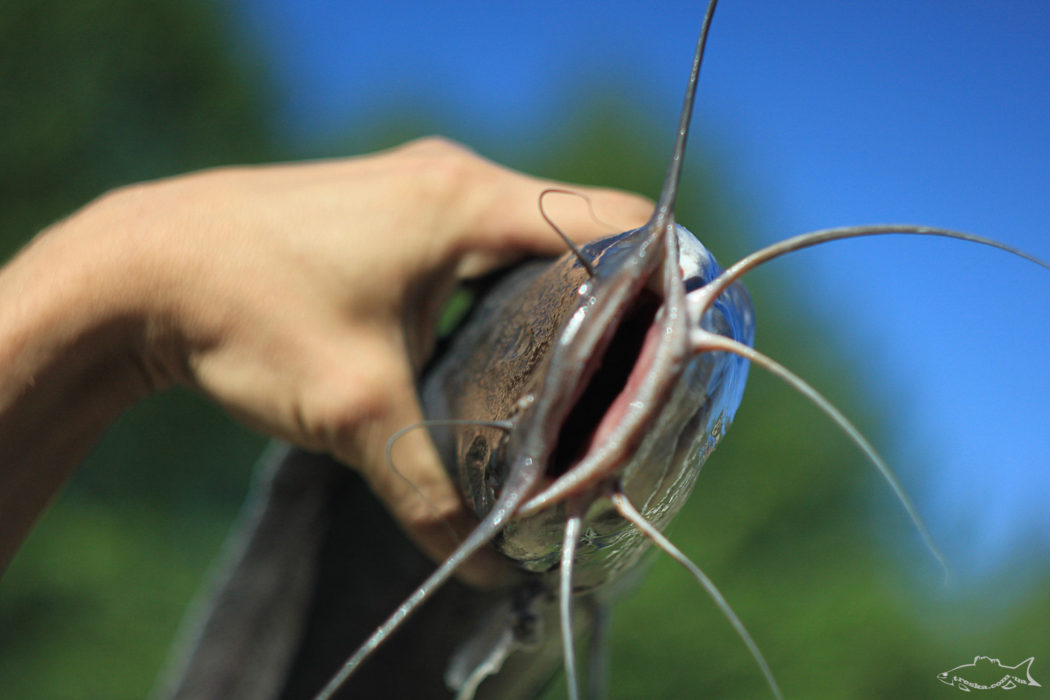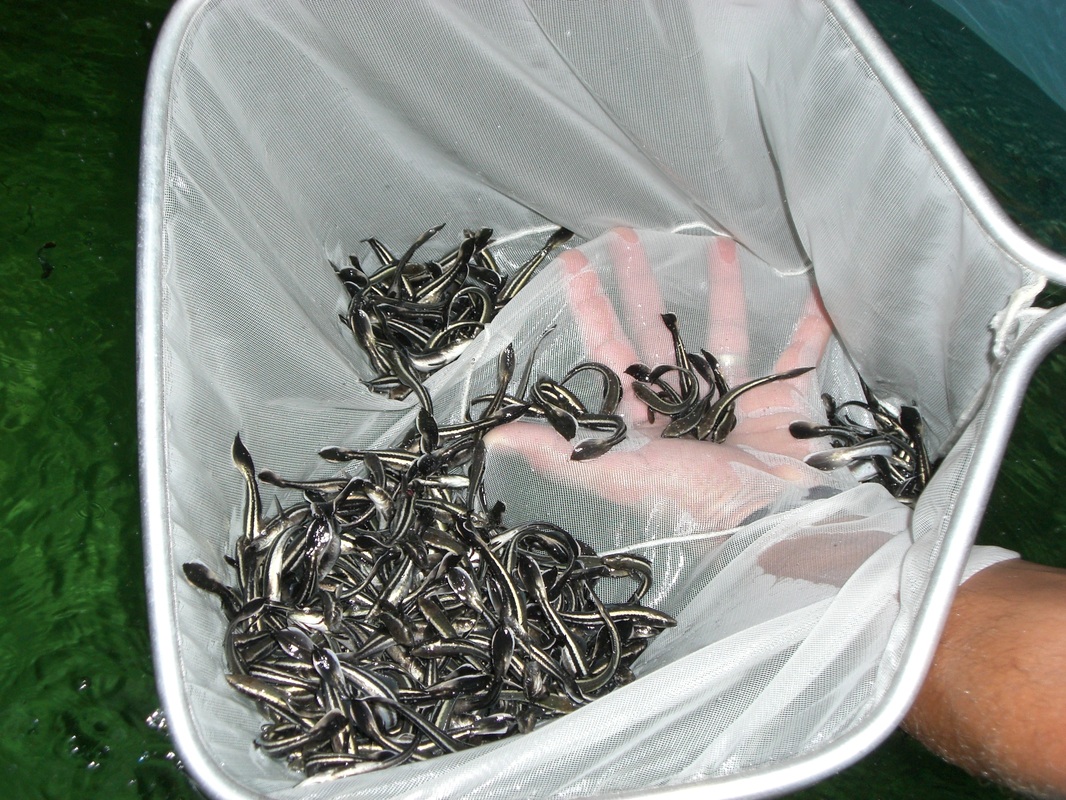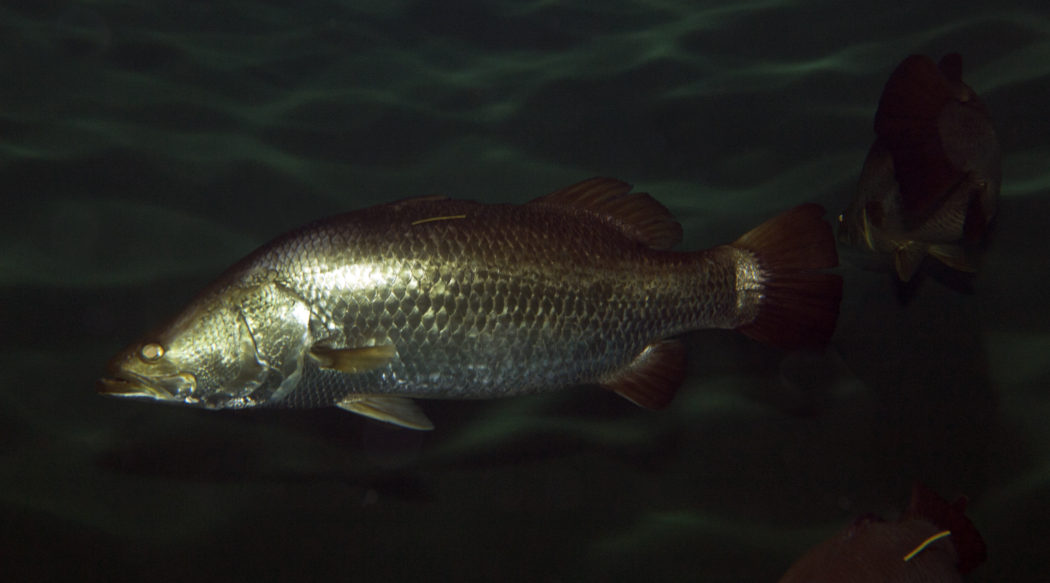Sections of the site
Editor's Choice:
- Business with China - where to start, how to find suppliers + TOP-15 goods from China and a list of trading platforms
- Where to invest 1000 dollars
- Three common misconceptions and six life tips
- How can maternity capital be used - what needs can be spent on maternity capital
- Caramel apples - a new idea for business
- Ready business plan for beginners
- Gypsum tiles for stone: 7 advantages of the material
- How to buy the best and interesting unusual goods from China for home, gifts and sales on Aliexpress in Russian?
- Business plan for opening a bath
- Where to spend maternity capital before the child is 3 years old
Advertising
| What kind of fish are profitable to grow? |
|
And what kind of fish to grow? Or, it would be more correct to ask the question: what kind of aquatic organisms to grow in aquaculture? This question is really the most important not only for novice aquaculturists, but also for already hardened aqua farmers. Many of the owners of existing farms have been using developments since the days of the USSR. It is clear that it is difficult to change and adapt to new conditions. “Break, don't build” - I often hear this type of excuse from experienced aqua farmers. And I just propose to calculate all the operating costs and the cost of farmed fish. Then all questions disappear at once. Adapt or die!
Aquaculture is a fairly dynamic business. New developments in this area appear almost every month. It is clear that the scheme (backbone) remains the same, but new means are being developed for the production of highly competitive products by optimizing production. It is clear that new items need to be introduced either in new sections of the farm or already in those sections that require modernization. In domestic fish farming, in principle, constant investments are not required, since with small volumes of fish being raised, these novelties do not significantly affect the cost of growing. You need to understand that the cost of growing 500 kg, 10,000 kg and 100,000 kg will be different. Between the first and the last number, this figure will be up to 40% lower. But before you decide to grow 100,000 kg of fish per year, you can and should train on a small module up to 10,000 kg per year. I believe that dabbling with a micro RAS (recirculating aquaculture system) up to 1000 kg of farmed fish per year only makes sense as a food for your own family, as well as for working out basic fish farming procedures. The cost of raising fish in such systems is usually high, but it will still be cheaper than buying the same fish from the supermarket. Plus, you understand exactly and know where and in what conditions the fish was grown. Plus watching the fish grow is a separate treat that comes as a nice bonus. And so there are enough loud words and beautiful expressions! Let's get down to discussing the main types of fish (and not only) that can be grown without any problems in ASD conditions. TilapiaFor me, as a novice fish farmer, this fish is undoubtedly number 1 on the list. What are the pros?
One of the biggest disadvantages is that fish need a temperature of 28-30 degrees for active growth. Tilapia can withstand a drop in temperature to 14-16C, but at the same time it almost does not eat.
The most promising species for cultivation: Nile (Oreochromis niloticus), blue (O. aurea), hybrids of previous species, and also Mozambique (O. mossambicus). I would not recommend growing Mozambique in intensive setups as it is quite stagnant, but it is ideal as a first species to grow. In Africa, it is grown in feeding ponds. In our country at this time there are problems with high-quality fry. Our team just launched the tilapia mother plant at the end of last year. The main species is Nile tilapia, the original line is obtained from Thailand. Large males gained 900 grams in 9 months. We hope to increase the volume of reared fry up to 10,000 fry per month in a couple of months. There are plans to import hybrid lines from Israel, Malaysia and China.
By the way, the organization of a small farm to obtain tilapia fry can be very interesting and profitable. To do this, you need to buy a uterine nest (1 male + 5 females). Such a nest will give you the opportunity to raise 3-4 thousand tilapia babies per month. With a wholesale price of one fish in the region of $ 0.2, this can be a good addition to your basic salary. The cost of a spawning nest will be around $ 200. In a couple of months we will be ready to offer our producers for local aqua farmers. The cost of growing tilapia should be around $ 2.5-3.5 per kg. The wholesale price is 6-7 dollars. Retail comes up to $ 10 per kg in Ukraine. I personally believe that this is the most promising aquatic animal at the present time. Therefore, I insisted on promoting this type of fish in our market. TroutRoyal fish! No wonder they call her that. Delicious fish suitable for all age groups of people. Trout meat is considered an exquisite delicacy and is in great demand among all faiths of the population.
For breeding under ASD conditions, rainbow trout (Onkorhynchus mykiss) is commonly used. This fish is native to North America. She prefers fast, cool rivers with a lot of dissolved oxygen. Trout are very demanding on the amount of dissolved oxygen in the water. The minimum allowable value for this indicator for trout is 7 mg / liter. If it is lower, then the fish already begins to feel bad and look for sources of oxygen. This is the difficulty of raising these fish in small RASs.
Also, this type of fish has certain requirements for the quality of feed: the fish is predatory, therefore it is important to feed it with a balanced commercial feed. The cost of such feed ranges from $ 1.8 to $ 2.2 per kg. All feeds in our country are imported from Europe. The feed ratio of such feed can be 0.95-1.1. Those. per unit of weight of the grown products, you need to spend 0.95-1.1 kilograms of feed. The cost of raising trout under ASD conditions ranges from $ 2.2 to $ 3.5. Currently, the wholesale price of trout in Ukraine is $ 4 per kilogram. At retail, royal fish are sold for $ 5-8. For cultivation, it is recommended to buy fry in the size of 8-10 cm, weighing about 10 grams. In just 6-7 months, this baby can be grown to the size of a table fish (250-350 grams). During growth, the fish must be sorted by size. This will increase the yield of fish and reduce the potential for cannibalism. The largest individuals can be grown up to large individuals of 2.5-3 kg. At the final stage of growing this fish, special feeds (with natural astaxanthin dyes) are used, which make the fish meat red. This fish is ideal for filleting, salting, smoking, etc.
Well, the fish is royal, therefore, the concerns for its cultivation are royal. But I am sure that these worries pay off with interest when you manage to grow tasty and nutritious fish. It is especially beneficial to grow trout in open superintensive RAS near restaurant complexes. A good fish restaurant can sell at least 10,000 kg of fish annually. At the same time, selling grown fish at a price of 8-10 dollars, which allows you to very quickly recoup the costs of building a RAS. Clary catfishOne of the most unpretentious types of fish to grow in aquaculture. They say that it can be grown in a very tight planting - more than 300 kg per 1000 liters of water. It is completely undemanding to oxygen, because in the process of evolution it has developed an organ that allows it to assimilate atmospheric oxygen. You can read more about this interesting fish on Wikipedia. And so, catfish is an omnivorous fish, i.e. you can really feed everyone: slaughterhouse waste, cheap small fish, minced meat, etc. It is clear that the feed ratio of such feed is very low (for 1 kg of weight gain, 2-2.5 of such feed is needed), but this really allows you to reduce costs. Commercial catfish feed of Ukrainian origin will cost around $ 0.8-0.9 per kg. Imported - under $ 2, which makes them uncompetitive.
Aggressive predator - clary catfish Catfish also need warm water for active growth. But he is really capable of growing more than 1 kg in 5-6 months. The capital costs for growing are also very low, as they allow you to grow a lot of products per unit volume of water. Economically, the cost of som ranges from $ 2 to $ 2.5 per kg. On the market, it is sold at $ 2.5-3 per kg. As you can see, the margin is not very large, but when growing a large amount of fish, this becomes a very interesting event. Plus, the fish can be processed (smoked, filleted), which will allow the fish to be sold at a higher mark-up. Catfish malek is available in any quantity. It can be bought at least in 3-4 farms throughout Ukraine. With the availability of warm water, cheap feed and well-established marketing, Clarium catfish is a very serious player in the domestic aquaculture market. SturgeonThis is the type of fish that interests most people who want to start raising fish. Apparently this is due to the fact that in Soviet times, sturgeon was considered a rare delicacy, was a relatively expensive product available only to a certain category of citizens. Another myth that is associated with sturgeons: they give black gold! But in order to get eggs from a female, then for this she needs to be raised for 5-6 years. And when you calculate all the costs of its production, you will understand that this caviar is really gold. In order to understand the scale of investments for obtaining a commercially profitable amount of caviar (2500-4000 kg per year), this will amount to at least 7 zeros. Plus, you still need to survive until the first crop of caviar. After all, the entire production cycle is at least 5-6 years. This is, all other things being equal, when everything is smooth, without a hitch. Usually, such a farm reaches its full capacity in about 8-10 years. Whoever has an extra ten years or ten million dollars, then you are welcome to the black gold business.
I personally have nothing against sturgeon. But I think that they are in the 4th place on my list. Trout, in principle, can even be put in third place, but the combination of a restaurant-aqua farm, which gives an excellent result and a quick return on investment, is painfully fascinating. And so, sturgeons from a fry of 10 grams grow to a commercially interesting fish of 1000 grams in 8-10 months. At the age of 15 months, this fish should weigh under 2 kilograms. Sturgeon growth potential is quite good, at the level of trout. But in comparison with tilapia and clary catfish, this is heaven and earth. But the sturgeon fish, as it were, will be "nobler", they also call it a royal fish. Therefore, the price for it is much higher.
From my own experience, sturgeon weighing one kilogram is not a very interesting business. There's really nothing to eat in this sturgeon. A good yield of meat is obtained in fish weighing 3-4 kilograms, and this fish needs to be grown for 2.5-3 years. Special food for sturgeon is needed. Although producers and large fish are fed with cheap frozen fish. Again, to get a kilogram of fish growth, you need to feed 5-6 kilograms of fish. Plus this type of feeding is more suitable for cage farming because these feeds will heavily pollute the water in your closed system. The cost of imported feed is around $ 2.5-3 per kg. CC (feed ratio) - 1.1. Sturgeon is quite picky about dissolved oxygen (minimum value - 5.5-6 mg / l), water quality. It is in second place after trout in terms of demanding and difficult cultivation. If you get used to it, then you can easily grow 25-30 kg of sturgeon in 1000 liters of water. By forcibly adding pure oxygen, fish density can be increased by 2-2.5 times. The cost of fish farming is 5-7 dollars per kg. The wholesale price is 7-8 dollars. Retail, respectively, is about $ 2 per kg. Those. wages for sturgeon are minimal. One of the promising ways to increase added value is the production of smoked balyk and carcasses. For a balyk, individuals weighing at least 5-6 kilograms are needed. Bester (a hybrid of beluga and sterlet), Lena and Russian sturgeon are best suited for cultivation under RAS conditions. The sterlet is rather slow-growing. BarramundiThe next interesting and promising object for cultivation in our country can be barramundi. Barramundi (lathes, white sea bass, Australian seabass, lat. Latescalcarifer) - ray-finned fish of the latov family of the order perchiformes. The fish is predatory, in natural conditions it feeds on small fish and crustaceans. Distributed from the Persian Gulf to Indochina and Australia. It is an object of industrial cultivation in the countries of South Asia, Australia. Recently, this species has been actively cultivated in RAS systems in Europe, the USA and other countries. For a year in natural conditions, it can grow more than 45 cm weighing 3-5 kg.
In Australia, it is one of the most important objects for sport and recreational fishing: the fish is very powerful, often reaching sizes over 100 cm and weighing up to 40 kg. It is also very common for barramundi to be grown in homemade mini RASs for human consumption. The fish feels great in completely sea, salted and fresh water. Therefore, it is ideal for cultivation in recirculating aquaculture systems (RAS). The fish is thermophilic, therefore, a comfortable and optimal temperature for growing in the RAS will be 27-29C. Some more interesting facts about barramundi. In the first 3-4 years of their life, all barramundi are males. After reaching a size of 70-80 centimeters, they turn into females. Therefore, when breeding, you need to constantly monitor that there are males in the broodstock. Fish are excellently bred in artificial conditions with the help of hormonal injections. One adult female can produce more than 30 million eggs per year. Also in Asian countries they believe that this meat of this fish has unique qualities (aphrodisiac) that have a positive effect on the sexual desire of people. No wonder many people call this fish "Passion fish". So, if you come across such a name on the menu of an Asian restaurant, know that you will be eating barramundi. Fish meat is considered a delicacy, therefore it is highly valued in the market. Gutted carcass sells for $ 30 to $ 50 per kg. AcneAnother promising gourmet fish is the European eel. ConclusionYou see how many interesting things I could tell you today about the possibilities of cultivating different types of fish. I tried to objectively provide information on each species. I am sure that this article contains some inaccuracies, errors, I ask you to inform me about them. After all, as they say, one head is good, but two are better! Also, I would like to highlight the topic of crustacean farming. Earlier I wrote about. I find this type of aquaculture very profitable and promising. Information about the project is already on our page. Also this year I want to conduct an experiment on growing our cancer using bioflocculation technology. There is a feeling that everything should work out and we will be able to grow a certain number of crayfish. Did you recognize the fish that I put on the cover of this article? Yes, this is the usual gustera that you take with your beer. I wonder if it will be commercially viable to raise this fish in the RAS with subsequent drying. Who can do the analysis? In the meantime, stay tuned for updates on this site, register on my forum Koigu.ru, subscribe to the page in |
| Read: |
|---|
Popular:
Power and energy measurement
|
New
- How birds differ from animals How birds differ from other vertebrates
- Scattering of folk wisdom Precious wisdom scattering of true caution
- How to make money on photo banks
- How I Sell Photos
- The scenario of the autumn holiday in the multi-age group "sorceress autumn"
- Congratulations on the day of the personnel worker Congratulate the personnel officer on the professional holiday
- Congratulations on the day of the personnel officer in verse
- A synopsis of a role-playing game on the topic: "All works are good, all professions are important" for children of the middle group, the outline of the lesson (middle group) on the topic Role-playing games by profession
- Educational project teaching Tatar as a foreign language
- Creative project for teaching the Tatar language "In the circus" - "Circus

